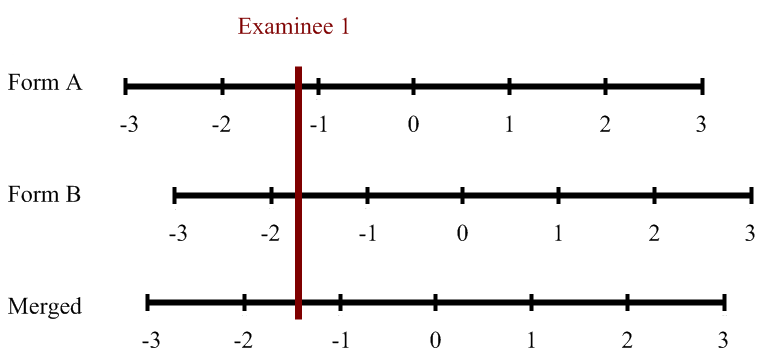Test Development

What is multi-modal test delivery?
Multi-modal test delivery refers to an exam that is capable of being delivered in several different ways, or of a online testing software platform designed to support this process. For example, you might provide the

Split Half Reliability Index
Split Half Reliability is an internal consistency approach to quantifying the reliability of a test, in the paradigm of classical test theory. Reliability refers to the repeatability or consistency of the test scores; we definitely

What is a Cutscore or Passing Point?
A cutscore or passing point (aka cut-off score and cutoff score as well) is a score on a test that is used to categorize examinees. The most common example of this is pass/fail, which we

Nedelsky Method of Standard Setting
The Nedelsky method is an approach to setting the cutscore of an exam. Originally suggested by Nedelsky (1954), it is an early attempt to implement a quantitative, rigorous procedure to the process of standard setting.

What are Enemy Items?
Enemy items is a psychometric term that refers to two test questions (items) which should not be on the same test form (if linear) seen by a given examinee (if LOFT or adaptive). This can

HR Assessment for Pre-Employment: Approaches and Solutions
HR assessment is a critical part of the HR ecosystem, used to select the best candidates with pre-employment testing, assess training, certify skills, and more. But there is a huge range in quality, as well

Incremental Validity
Incremental validity is a specific aspect of criterion-related validity that refers to what an additional assessment or predictive variable can add to the information provided by existing assessments or variables. It refers to the amount

Public Safety Selection Tests, Hiring, and Litigation
QUESTION: “What are the costs associated with using validated assessments in public safety hiring?” ANSWER: “Always cheaper than a lawsuit!” Selection tests, pre-employment assessment, and promotional exams are a key part of the public safety

Test Score Reliability and Validity
Test score reliability and validity are core concepts in the field of psychometrics and assessment. Both of them refer to the quality of a test, the scores it produces, and how we use those scores.

Test Score Equating and Linking
Test equating refers to the issue of defensibly translating scores from one test form to another. That is, if you have an exam where half of students see one set of items while the other

The Bookmark Method of Standard Setting
The Bookmark Method of standard setting (Lewis, Mitzel, & Green, 1996) is a scientifically-based approach to setting cutscores on an examination. It allows stakeholders of an assessment to make decisions and classifications about examinees that

What is an Assessment / Test Battery?
A test battery or assessment battery is a set multiple psychometrically-distinct exams delivered in one administration. In some cases, these are various tests that are cobbled together for related purposes, such as a psychologist testing

What is a Psychometric Test or Assessment, & how to select the right one?
Psychometric tests are assessments of people to measure psychological attributes such as personality or intelligence. They an increasingly important part in informing decisions about people in education, psychiatry, and employment/HR, as research shows they are

Three Approaches for IRT Equating
IRT equating is the process of equating test forms or item pools using item response theory to ensure that scores are comparable no matter what set of items that an examinee sees. If you are

Paper-and-Pencil Testing: Still Around?
Paper-and-pencil testing used to be the only way to deliver assessments at scale. The introduction of computer-based testing (CBT) in the 1980s was a revelation – higher fidelity item types, immediate scoring & feedback, and

Power of linear on the fly testing
Linear on the fly testing (LOFT) is an approach to assessment delivery that increases test security by limiting item exposure. It tries to balance the advantages of linear testing (e.g., everyone sees the same number

What is a Standard Setting Study?
A standard setting study is a formal process for establishing a performance standard. In the assessment world, there are actually two uses of the word standard - the other one refers to...

What is Item Banking? What are Item Banks?
Item banking refers to the purposeful creation of a database of assessment items to serve as a central repository of all test content, improving efficiency and quality. The term item refers to what many call
